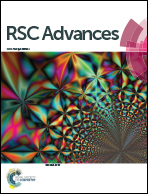Study of resistance performance of Al2O3–ZnO–Y2O3 thermal control coating exposed to vacuum-ultraviolet irradiation
Abstract
As deep space exploration moves farther and farther away, thermal control coating of the in-orbit spacecraft will suffer a serious vacuum-ultraviolet radiation environment, which seriously threatens the reliability of the spacecraft in orbit. Therefore, it is important to improve the vacuum-ultraviolet resistance performance of the thermal control coating. In this work, the inorganic Al2O3–ZnO–Y2O3 thermal control coating was in situ fabricated on a 6061 aluminum alloy surface by PEO technology, and its vacuum-ultraviolet resistance performance was investigated. The results show that the Al2O3–ZnO–Y2O3 thermal control coating has a good resistance performance to vacuum-ultraviolet radiation, which is mainly because the large extinction coefficients of the ZnO and Y2O3 materials in the ultraviolet band are conducive to improving the ultraviolet resistance performance. Furthermore, the life prediction model of the Al2O3–ZnO–Y2O3 thermal control coating shows that its Δαs value first slightly increases and then tends to be stable with the increase of ultraviolet irradiation time from 0 ESH to 25 000 ESH, and the maximum variation of Δαs is about 0.0536. This work provides a material basis and technical support for the thermal control system of spacecraft with long life and high reliability.



 Please wait while we load your content...
Please wait while we load your content...